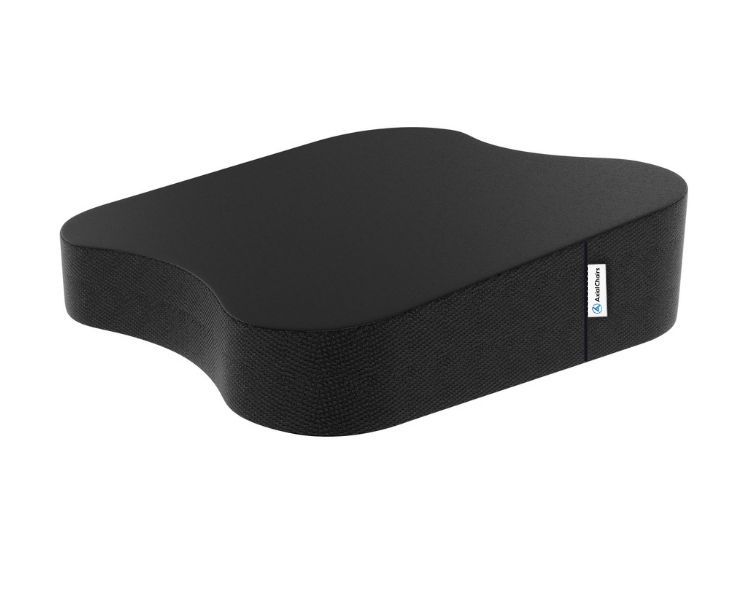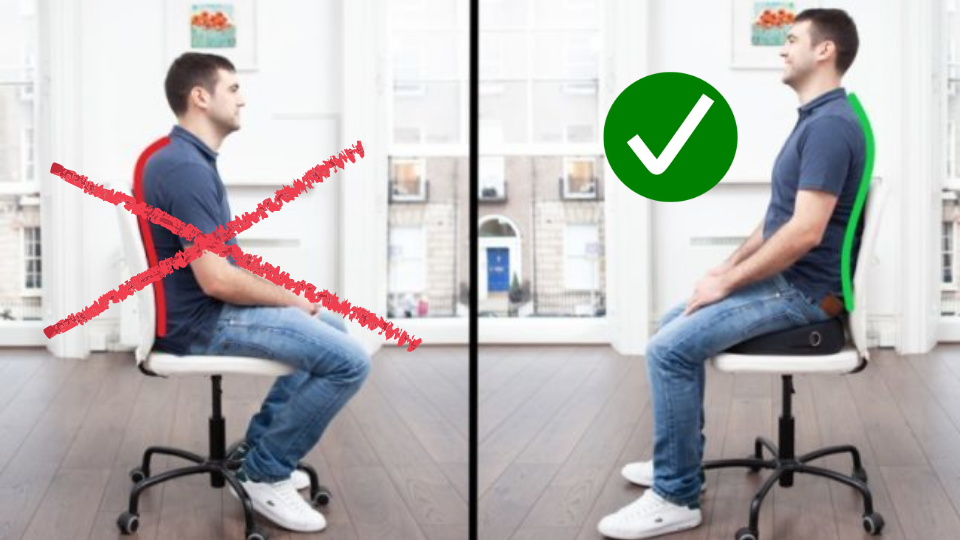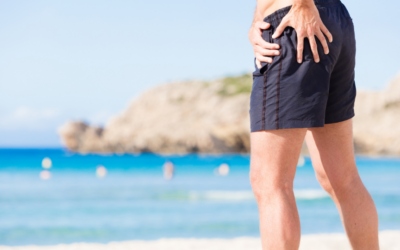Do you have persistent back pain but only when sitting for a long time? If so, you are not alone. Millions of people suffer from this issue and many don’t know what to do about it or think there is nothing that can be done. We’re here to tell you that understanding the source of your discomfort and taking proactive steps can lead to a dramatic improvement in your quality of life. In this blog post, we’ll discuss the causes behind back pain while sitting yet no pain while walking as well as possible treatments that may help reduce or eliminate your symptom severity.
As a general rule, back pain when sitting but not walking may result from poor posture, prolonged sitting, disc issues, muscular imbalances, spinal nerve compression, or sacroiliac joint dysfunction. To address this pain, improve posture, take breaks from sitting and strengthen core muscles.
Let me guide you through the best way to sit to avoid discomfort. For over 30 years, I’ve been practicing chiropractic, and during that time, I’ve also trained as an ergonomist. I have a published book on posture, spoke on this subject on national tv, and have engineered several solutions to help people achieve better posture and comfort while sitting. In addition, I ran a successful Kickstarter campaign to fund the development of a set of ergonomic seat cushions. With all this experience and expertise, I’m confident I can offer some excellent advice that can help reduce or even eliminate your symptoms.
Causes and Solutions
At some point in our lives, we may have experienced back pain when sitting but not walking. This type of pain can be quite frustrating as it can hinder our daily activities and cause discomfort. If you’re currently experiencing this type of pain, you’re not alone. In this article, we will discuss the causes of back pain when sitting but not walking and some solutions that can help alleviate the discomfort.
All Day Comfort & Support
Causes of Back Pain When Sitting but Not Walking
There are several reasons why you may experience back pain when sitting but not walking. One of the most common causes is poor posture. When we sit for long periods, we tend to slouch, which can cause strain on our back muscles and spine. This strain can result in pain and discomfort.
Another cause of back pain when sitting is a herniated disc. The discs in our spine act as shock absorbers, but over time they can become damaged and herniated. When this happens, the disc can press on nerves, causing pain in the back and legs.
Spinal stenosis is another condition that can cause back pain when sitting. This condition occurs when the spinal canal narrows, putting pressure on the nerves in the spine. This pressure can cause pain and discomfort, especially when sitting for extended periods.
Solutions for Back Pain When Sitting but Not Walking
If you’re experiencing back pain when sitting but not walking, there are several things you can do to alleviate the discomfort. One of the most important things you can do is to improve your posture. Sit up straight and keep your feet flat on the floor. You can also use a lumbar support pillow to help maintain proper posture.
If your back pain is caused by a herniated disc, your doctor may recommend physical therapy or medication to help alleviate the pain. In severe cases, surgery may be necessary to repair the disc.
For spinal stenosis, your doctor may recommend exercise and physical therapy to help alleviate the pain. In severe cases, surgery may be necessary to widen the spinal canal and relieve the pressure on the nerves.
Preventing Back Pain When Sitting but Not Walking
Preventing back pain when sitting but not walking is essential to maintaining good spinal health. One of the best ways to prevent this type of pain is to maintain good posture. When sitting, keep your feet flat on the floor and your back straight. You can also use a lumbar support pillow to help maintain proper posture.
Regular exercise is also essential to preventing back pain. Exercise can help strengthen your back muscles and improve your overall spinal health. Make sure to incorporate exercises that target your back muscles, such as back extensions and bird dogs.
In addition to exercise, maintaining a healthy weight can also help prevent back pain. Excess weight can put strain on your back muscles and spine, leading to pain and discomfort.
Seat Cushion for Back SupportAxial Ergonomic Seat Cushion® | Seat Chair Wedge
Quick Guide: A 30-Second Summary

All Day Comfort & Support
Product Name
Axial Designs™ Seat Cushion
Price
$149
Warranty
1 Year
Type
Posture Wedge
Top Layer
100% Natural Latex (Molded)
Bottom Layer
High-Density Foam
Top Material
Isometric Grippy Vegan Leather
Bottom Material
Non-Slip Material
Side Material
3D Breathable Fabric
Lower Back Pain When Sitting but Not Standing: Sciatica, Muscle Strain, and Improper Exercise Form
Lower back pain that occurs when sitting but not standing, often caused by poor posture, muscle imbalances, or prolonged periods of sitting, can also be due to sciatica or muscle strain. This type of pain is usually experienced as a dull ache or discomfort in the lower back that is not present when standing. One contributing factor may be not using proper form when exercising, which can exacerbate muscle imbalances and lead to increased pain.
Lower Back Pain Made Worse by Sitting: Spinal Stenosis, Pain Management, and Herniated Lumbar Disc
Sitting for extended periods can put excessive pressure on the muscles, ligaments, and spinal discs of the lower back, leading to discomfort and pain that may indicate a herniated lumbar disc, potentially worsening spinal stenosis. A sedentary lifestyle, poor ergonomics, and weak core muscles can also contribute to this low back pain. To manage this pain, maintain proper posture, take regular breaks to stand and stretch, and use an ergonomically designed chair with appropriate lumbar support.
Throbbing Lower Back Pain When Sitting: Herniated Disc, Chronic Pain, and Spinal Column Issues
Throbbing lower back pain when sitting can be caused by muscle spasms, irritation of the sciatic nerve, or a more serious condition such as a herniated disc affecting the spinal column. Chronic pain in the lower back may also occur. If the pain is severe, persistent, or accompanied by other symptoms, consult a healthcare professional for a proper diagnosis and pain management plan.
Lower Back Hurts When Sitting and Getting Up: Pain Relief Strategies for Muscle Strain and Sciatica
Lower back pain when sitting and getting up can result from muscle stiffness, poor posture, or spinal misalignment, as well as muscle strain or sciatica. To alleviate this pain, try incorporating stretching and strengthening exercises for the lower back and core muscles, and utilize pain relief strategies such as hot/cold therapy or over-the-counter pain medication to address chronic pain or severe lower back pain.
Black Friday: 35% Off Today
Typical Delivery 1-3 Days
How to Fix Lower Back Pain From Sitting: Addressing Chronic Pain, Herniated Disc, and Spinal Stenosis
To fix lower back pain from sitting caused by chronic pain, herniated disc, or spinal stenosis, try the following strategies:
- Maintain proper posture: Sit with your back straight, shoulders relaxed, and feet flat on the ground. Use a chair with adequate lumbar support or place a cushion behind your lower back for additional support.
- Take regular breaks: Stand up, stretch, and walk around for a few minutes every hour to prevent muscle stiffness and promote circulation.
- Exercise regularly: Incorporate exercises that strengthen the lower back and core muscles, such as planks, bridges, and pelvic tilts.
- Adjust your workstation: Ensure your chair, desk, and computer monitor are at the correct height to promote good posture and minimize strain on your back.
- Consider alternative seating options: Try using an exercise ball or standing desk to vary your sitting position and engage your core muscles throughout the day.
- Consult a healthcare professional: If your lower back pain persists or worsens, consult a healthcare professional for a proper diagnosis, pain management plan, and treatment options to address medically significant pain
Summary
The takeaway from this discussion on back pain when sitting but not walking is that the underlying cause can range from a simple anatomical issue to something more serious. The good news is that, regardless of the reason, there are steps you can take and treatment options available which can help reduce or even eliminate your back pain. Talk to your doctor and give them as much information as you can concerning your activities prior to the onset of your pain, any modifications you’ve made to improve symptoms, and any medications or treatments you’ve already tried. With their advice and guidance, you’ll be able to start finding relief and comfort in no time. Additionally, it’s important to remember that if your condition doesn’t seem to be improving with conservative treatments then surgery may also be an option. Regardless of the source of your discomfort, don’t overlook dealing with back pain when sitting but not walking; take action for yourself today!






